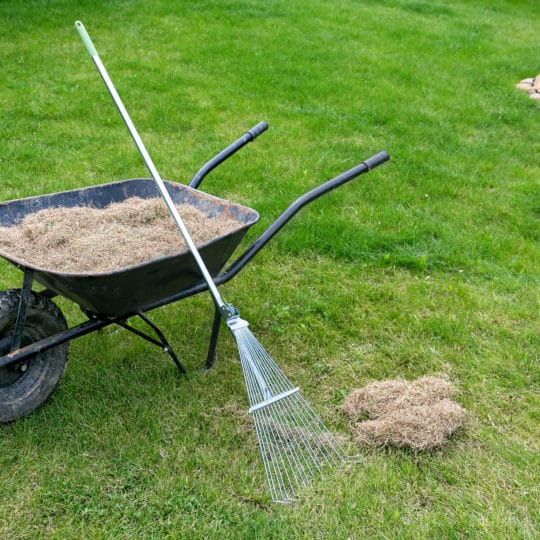Dethatch Your Lawn
The Whys & Hows
Posted
March 16, 2023

Imagine waking up from a deep sleep to find yourself tangled in a mess of sheets and blankets. Feels a little constricting, right? Well, your grass may be going through the same thing. Now that spring is just around the corner, your grass is getting ready to wake up from dormancy. You can help make this a more pleasant transition by loosening up any thick layers of thatch. Learn how this layer forms and why it’s important to dethatch your lawn.
What is Thatch?
Over time, dead grass, mulched leaves, and other debris can build up and create a mat-like layer between the soil and grass blades. A thin layer of thatch has several benefits:
- Provides nutrients as it breaks down
- Maintains soil temperature, moisture, and pH balance
- Acts as a barrier to burrowing pests
However, if this layer reaches an inch thick, it ends up blocking nutrients, water, and air from reaching the roots and ends up suffocating the grass. This is when you need to break out the rake and break up the barrier.
How to Dethatch Your Lawn
The main goal of dethatching is to break up the thick layer of organic material between the soil and grass blades. You can measure the thickness by digging up a small section of grass and noticing how much material is present.
There are several tools available for this purpose.
- Leaf rake. Your typical fall lawn maintenance tool can help dethatch small areas, but it’s not as efficient if you need to cover your entire lawn.
- Rigid rake. The metal head is sturdier than your leaf rake; therefore, it’s easier to break up thicker areas.
- Dethatching rake. Designed specifically for the job, this rake features rows of straight-edged tines to clear organic matter.
- Power rake. A motorized tool is more helpful when tackling an entire yard. Some models feature a walk-behind function while others can be towed behind a riding mower.
If you’re using a manual tool, it’s a similar process to raking leaves.
- Crisscross the lawn in parallel paths.
- Push the rake deeply through the grass to reach the layer underneath.
- Remove the loose thatch.
You can go one step further and aerate your lawn immediately after dethatching. This breaks up any compacted soil and provides a clear path for air to circulate and water and nutrients to flow.
You may notice bare spots in your lawn after dethatching. Now that the soil is broken up, it’s a great time to overseed or patch these spots with grass seed. Give your grass a good drink to both set the seed and relieve the stress of dethatching.
Not all lawns need to be dethatched, and even ones that do tend to only require it once every few years. If you’re still unsure about the current state of your lawn, contact Cardinal Lawns for an evaluation and other tips to help it wake up on the right side of the season.
Special Offer for New Customers
Two Free Lawn Care Treatments
Hurry! Offer Expires April 30, 2025